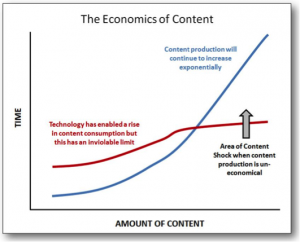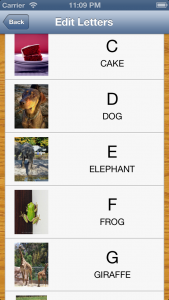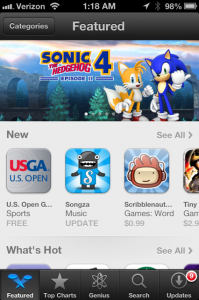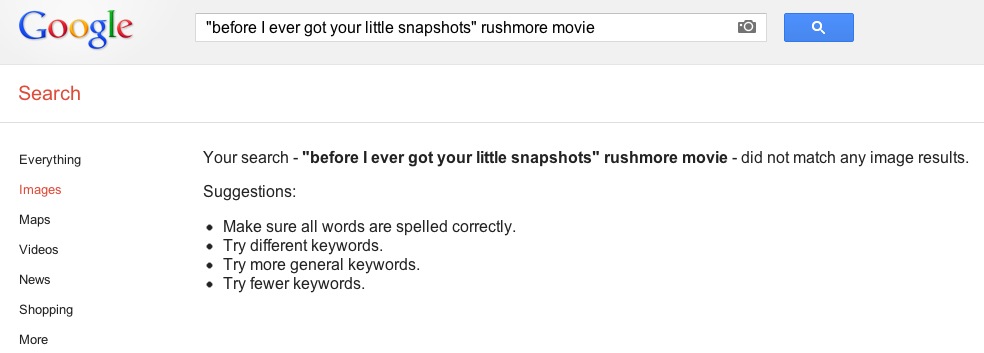While at SMX West, I heard a particularly interesting subject raised by Rand Fishkin of Moz. He suggested in his “The SEO Revolution Will Not Be Televised” presentation the following: content growth is outpacing query growth.
This relatively boring fact actually will have a rather significant impact on the future of organic search marketing, as well as other channels like social media. Bear with me as I extrapolate on this concept and explore where it may take us in a few years.
Rand’s accompanying blog further explains that as content generation goes up, the likelihood of anyone seeing a piece of created content gets proportionately lower. This is straightforward to confirm as we have seen view rates for Facebook and tweets continue to drop as users and usage climbs.
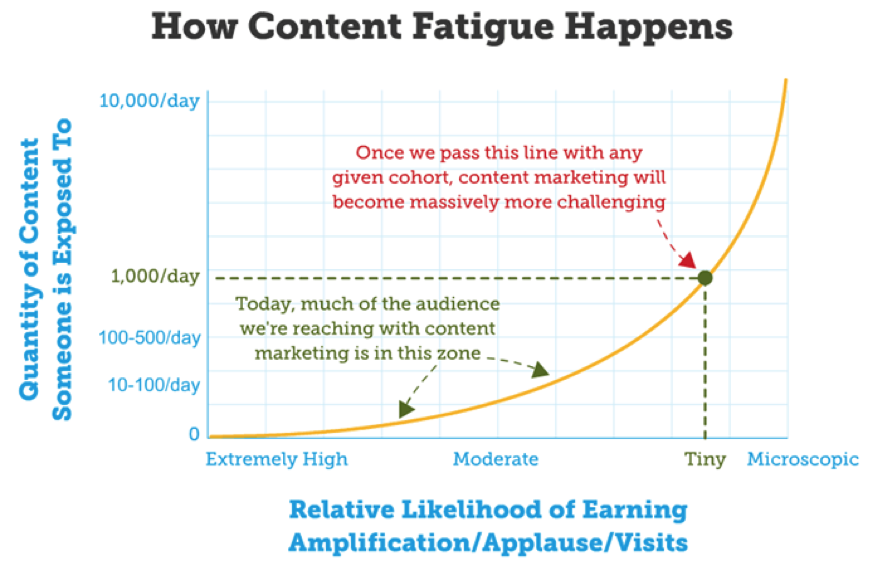
In a brief email exchange, Rand did not think these changes will lead to marketers shifting their attention away from search anytime soon. He said “the uniquely valuable, best-in-class creators, though, will always have opportunity,” and I would certainly agree with that.
However, I am not quite as optimistic about what the future may hold if/when query growth rates flat line and content growth rates keep increasing. I believe that if the supply of content gets too high, and demand for it (in the form of queries) starts to decline, it will ultimately become too cost-prohibitive for many content creators to continue to pursue traffic and likes by generating new content. This would be especially true for small and medium sized businesses that count on search engines for both paid and organic traffic and don’t have many disposable marketing dollars.
To get an idea of when this inflection point may occur is relatively easy. Companies such as comScore provide monthly updates to the volume of searches taking place, seen here for desktops:

According to Search Engine Land, a decline of 10 percent is the largest change in over four years, which suggests that we are nearing a high-water point where there are simply no more things users need to search for. Notably, these numbers don’t include the high growth of searches on mobile devices, which surely accounts for some of the decline in paid search queries. Google suggests that global mobile search query volume will be higher than desktop queries perhaps by the end of 2014, but users are typically less likely to browse for content when searching on mobile devices. They are looking for quick answers, so a mobile search is not necessarily equivalent to a desktop search.
Nonetheless, if we have not yet reached a point where overall queries (desktop + mobile) are declining, it’s probably coming around the corner sooner than we would hope.
Once that day comes where total queries stop growing, the economics of creating and optimizing for content will become starkly different. Mark Schaefer wrote an article earlier this year where he evaluates how supply and demand for content is already at risk of becoming upside down. In this article, he proposes a similar conclusion that content creation will decelerate due to the unavoidable limit of content-consumption time available (there are only so many humans and only 24 hours available per day after all).
In economics, when supply is significantly higher than demand the invisible hand will correct the disparity. This can come in two forms: demand increasing (more searches in our example), or supply decreasing (less content to choose from). When supply is far higher than demand, the creators of the supply will slow or stop production until demand catches up.
That means that if content marketers are pouring time and money into content that will not be seen or liked by virtually anyone, they will quickly figure it out and stop creating it. Once Google has curated the web and has the answer for virtually any question (see theKnowledge Graph initiative), what role will content creators and publishers then play?
What is most interesting to me is what it means for the future of search, both paid and organic. If supply of queries doesn’t continue to grow, there will simply not be enough users that are going to see your ads or pages at a reasonable expense. Then, presuming it becomes unprofitable to create content for organic traffic or run paid search ads, where will marketers turn to continue to grow their brands and market share?
I predict that the answer is accelerated fragmentation of marketing dollars and a general decline in spending on paid and organic search optimization. Native advertising and alternative lead sources will grow as brands large and small try to find new ways to reach users.
Digital marketing spend is definitely not going down anytime soon, but if the current trends continue the balance of power that Google maintains could certainly shift away from them. People are starting to search less frequently, and when they do the search results are becoming more dominated by direct answers and Knowledge Graph cards – which means even less traffic available for content creators.
To me, the answer does not seem to be social media, as promoting posts is already a necessity if you want any of your followers to see your messaging. This is a very different dynamic than the good ol’ days of building a community and being able to easily keep in touch with them. If a small or medium sized business has to promote a post or tweet in order to make sure their followers see it, then eventually the content creation plus promotion costs will become too significant compared to the value in return – interaction and engagement. It is good for advertising revenues today, but will cause damage in the medium and long term with a business’ desire to use these platforms as a marketing channel.
So, what is a marketer to do if these trends continue? I see an enormous opportunity for further innovation in the space, by making it easier to buy ads across apps, ad networks and native buys. Beyond that, be prepared to diversify your marketing media mix and always be testing new channels and lead sources.
Of course, never count out the brilliant minds that are at work behind the products at the top Internet properties. Google, Facebook, Twitter, LinkedIn and even Apple will surprise us all with new opportunities that we had not even imagined. They have virtually unlimited resources to solve these problems, and buildings full of PhDs to work on them.
What do you think? Is the dominance of Google going to be a distant memory in a few short years or will they continue with their market leadership well into the 2020’s?

